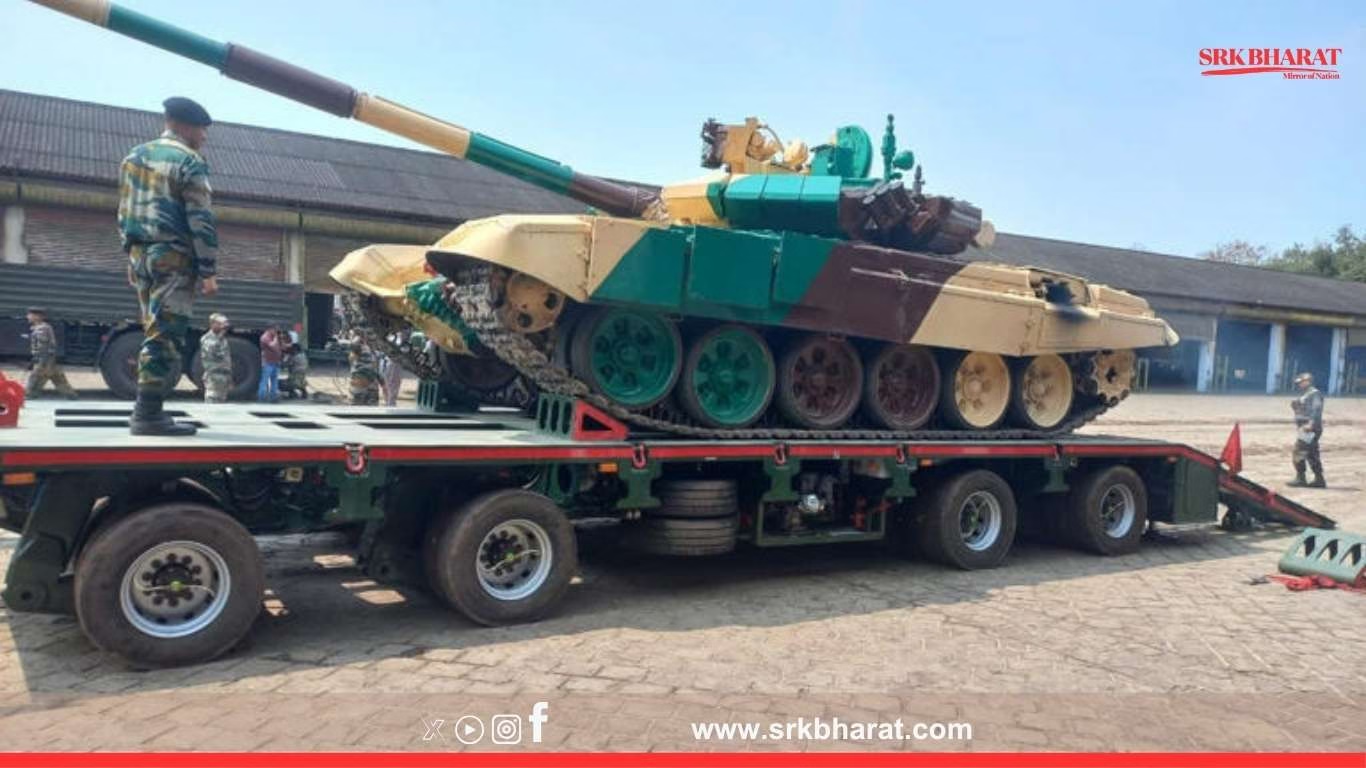China’s rapid induction of Russian-origin S-400 Triumf air defence systems has sparked fresh security concerns in Indian strategic circles. With reports indicating China possesses at least twice as many S-400 batteries as India, defence experts are assessing the implications on India’s deterrence capability and battlefield strategies along the Line of Actual Control (LAC).
What Are S-400 Systems?
| Feature | Details |
|---|---|
| Origin | Russia (Almaz-Antey) |
| Type | Long-range surface-to-air missile (SAM) system |
| Range | Up to 400 km (varies with missile type) |
| Targets | Aircraft, UAVs, ballistic and cruise missiles |
| Key Strength | Ability to track up to 80 targets simultaneously and engage up to 36 |
The S-400 remains one of the world’s most advanced air defence systems, capable of creating layered air defence shields that are difficult to penetrate without advanced stealth aircraft or missile saturation tactics.
China’s S-400 Deployment
Chinese media reports and satellite imagery confirm PLA’s deployment of S-400 batteries along its eastern coast facing Taiwan and its western sector bordering India. Defence watchers estimate:
- Total Chinese S-400 batteries: ~6-8
- Key deployment areas: Fujian (for Taiwan), Xinjiang, Tibet Autonomous Region (for India)
- Operational status: Fully inducted since 2018-2019
India’s S-400 Status
India signed a $5.43 billion deal with Russia in 2018 for five S-400 batteries. Current deployment status is:
| Battery | Location | Status |
|---|---|---|
| 1st | Punjab sector (Pakistan-facing) | Operational |
| 2nd | Northeast (China-facing) | Operational |
| 3rd – 5th | Staggered delivery | Expected by end-2025 |
Why The Numbers Matter
With China having nearly double the Indian fleet, security analysts argue:
- China’s layered redundancy offers greater resilience against initial pre-emptive strikes.
- India’s limited number constrains wide simultaneous coverage across both Pakistan and China fronts.
- Strategic flexibility: China can rotate its batteries between Taiwan and India theatres based on threat levels.
Can India Break Through The Chinese S-400 Shield?
Military strategists say penetrating the S-400 defence is extremely challenging but not impossible. The following approaches are assessed:
| Strategy | Explanation |
|---|---|
| Stealth Assets | India’s upcoming AMCA stealth fighter (post-2030) could reduce detection ranges. Rafale has partial stealth features but is still trackable at reduced range. |
| Electronic Warfare (EW) | High-power jamming aircraft like Su-30MKI with EW pods and future dedicated EW jets can degrade S-400 tracking. |
| Saturation Attacks | Launching a volley of decoys, cruise missiles, and drones to overwhelm radar and missile reload limitations. |
| Hypersonic Missiles | Currently unavailable to India. Hypersonic glide vehicles can penetrate dense air defences due to speed and maneuverability. |
| Cyber Attacks | Pre-emptive cyber operations targeting air defence networks, though effectiveness depends on deep infiltration. |
Global Precedents Of Breaking Air Defence Shields
| Conflict | System | Outcome |
|---|---|---|
| Gulf War (1991) | Iraqi SAMs | Overwhelmed by US stealth and EW attacks. |
| Syria (2020s) | Russian S-300/S-400 (Syrian operated) | Israeli jets use terrain masking and EW to strike targets repeatedly. |
| Ukraine War | Russian layered defences | Gradual attrition using drone and HIMARS attacks; penetration remains difficult without air superiority. |
Indian Defence Experts Speak
| Expert | Designation | View |
|---|---|---|
| Air Marshal (Retd) Anil Chopra | Director General, CAPS | “No system is impenetrable. It depends on tactics, decoys, and stealth integration.” |
| Lt Gen (Retd) DS Hooda | Former Northern Army Commander | “Force multipliers like drones and cyber warfare are key in neutralising air defence advantages.” |
| Group Captain (Retd) Ajay Lele | Defence Analyst | “India must accelerate its indigenous EW and hypersonic programmes to maintain credible deterrence.” |
Indigenous Counter-Systems Under Development
India is fast-tracking its Medium-Range Surface-to-Air Missile (MRSAM), Extended Range SAM, and XR-SAM to build layered defences comparable to the Chinese S-400 umbrella. DRDO is also exploring DEWs (Directed Energy Weapons) and anti-radiation missile upgrades to target radar units of such batteries.
Geopolitical Implications
China’s numerical advantage with S-400s influences regional military balance in three ways:
- Limits Indian Air Dominance: Threatens IAF operations near Chinese territory.
- Emboldens Chinese A2/AD (Anti-Access/Area Denial) Strategy: Strengthens its deterrence posture against both Taiwan and India.
- Triggers Regional Arms Race: Forces India to accelerate stealth, EW, and missile development programmes.
Comparative Table: India Vs China S-400 Deployment
| Country | Estimated Batteries | Deployment Areas | Induction Timeline |
|---|---|---|---|
| China | 6-8 | Eastern Coast, Xinjiang, Tibet | 2018 onwards |
| India | 2 (operational), 3 (by 2025) | Punjab, Northeast | 2021 onwards |
Broader Military Strategy
Defence planners emphasise that breaking the S-400 shield is not a singular weapon issue but a multi-domain operational challenge involving:
- ISR (Intelligence, Surveillance, Reconnaissance) integration
- Real-time cyber and EW operations
- Coordinated drone and decoy swarms
- Air-to-ground missile coordination with stealth assets
Future Prospects
India is exploring deeper partnerships with France, US, and Israel to acquire advanced EW suites, stealth technologies, and anti-radiation missile capabilities. The AMCA stealth fighter project, if accelerated, could become India’s strongest counter to Chinese S-400 batteries post-2030.
Conclusion
China’s possession of twice as many S-400s as India underlines the growing strategic imbalance across the Himalayas. While India’s current capabilities pose challenges in penetrating this sophisticated shield, planned indigenous programmes and tactical multi-domain warfare integration can offset the asymmetry in the coming decade. The critical imperative for New Delhi remains: accelerating technological indigenisation while refining joint force doctrines to ensure credible deterrence against China’s expanding anti-access arsenal.
Disclaimer
This news article is prepared for general defence and strategic analysis dissemination based on open-source intelligence, expert interviews, and defence research. Readers are advised to consult official government statements, classified assessments, and certified military publications before deriving conclusions or framing operational, procurement, or diplomatic decisions based on this coverage.











